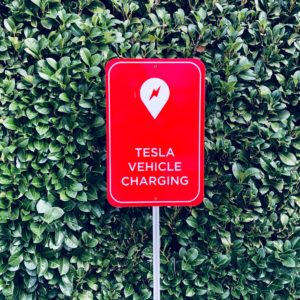
The 4 options for charging
Before we discuss charging levels for a home charging station, there are about 4 general options. The first is a Tesla supercharger that provides quick charging for a fee. There’s also a destination charger that is provided by businesses, hotels, and other locations. Charging is free or provided at a low cost. However, charging is much slower than a supercharger, typically providing about 20 – 30 miles of range per hour of charging.
The third is the Public charger which is offered by companies like ChargePoint. Costs of a public charger are billed to your credit card.
And finally, home charging is charging done at your home using an electrical circuit.
Tesla charging installation at home
You can install it before bringing home your vehicle or after. Installing the Tesla charging station takes only a few days and sometimes hours.
The steps to follow are;
- Find a certified electrician with experience in Tesla charging installation
- Request a quote from the electrician. You can get an online quote if you describe your needs properly or the electrician can come for an inspection.
- After agreeing on the quote and contracting the electrician, order your charging equipment.
- Schedule the installation time with the electrician and begin.
What might be the cost?
The cost of installing a Tesla charging station varies. They’re a lot of factors involved such as;
- Professional installation service and materials
- Permit
- Inspection
- Installation warranty
Additional items:
- Long wire run (distance from the electrical panel to installation site)
- Additional sub-panel
- Trench (underground wires)
- Main panel upgrade
- Pedestal installation
- Hiding cables behind walls
In total, the cost can range from $500 to $1500.
How fast can I charge?
There are various options or charging levels with their unique speeds. Here’s a quick guide –
- Level 1 charge – also known as trickle charging – known for its slow charging speed – uses 120-volt receptacle – takes 4 days to give a full charge – gives 2 miles of Tesla range per hour charging – 1.4kW power delivery.
- Level 2 charge – known as the most flexible and fastest home charging option for EV drivers – uses 240-volt receptacle – takes 6-30 hours to give a full charge – gives 9-52 miles of Tesla range per hour charging – 3.7 – 17.2 kW power delivery.
- Level 3 charge – also known as supercharging or DC fast charging – the fastest charging speed – uses 480-volt receptacle – takes 30 minutes to give a 170 miles range – up to 140kW power delivery.
Anything else to know?
Yes, lots. If you stay in an apartment or condo, getting permission to install an EV charger isn’t particularly easy, mostly because there are other neighbors on the property. But it’s steadily getting easier to get permission.
EV owners can also get incentives for using electric cars. These incentives can alleviate the cost at the federal, state, county, municipal, and utility levels. So be sure to check what your state has for you

